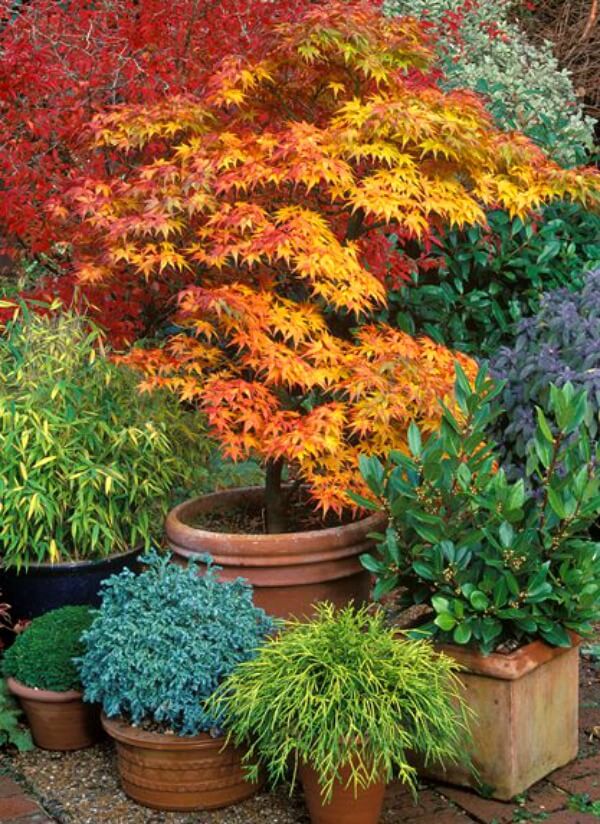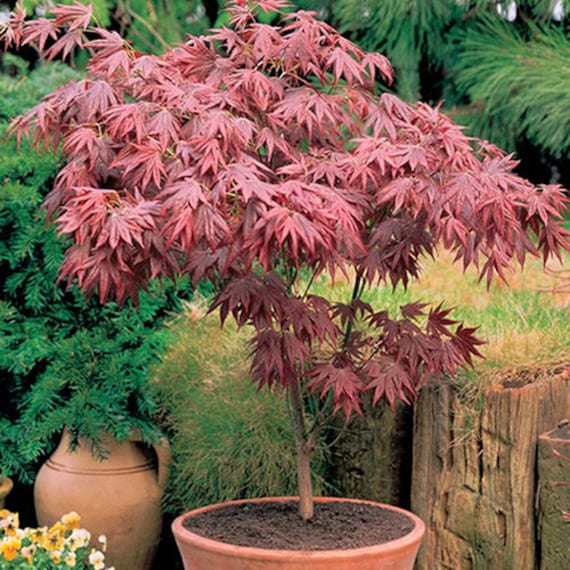Unlocking the Secrets of Container Gardening
When it comes to growing Japanese Acer trees, container gardening offers a unique set of benefits. By growing a Japanese Acer in a pot, you can enjoy the flexibility of being able to move the tree to different locations, making it perfect for small or urban spaces. Additionally, container gardening allows for year-round beauty, as you can easily bring the pot indoors during harsh weather conditions. With the right care and attention, a Japanese Acer in a pot can thrive, providing a stunning focal point for your garden or indoor area. Whether you’re a seasoned gardener or just starting out, growing a Japanese Acer in a pot is a great way to add some elegance and sophistication to your space.
Choosing the Right Japanese Acer Variety for Your Pot
With over 1,000 different species of Japanese Acer trees, selecting the right variety for your pot can be a daunting task. However, by understanding the different types of Japanese Acer trees suitable for container gardening, you can make an informed decision that will thrive in your climate and space. Dwarf and compact varieties, such as ‘Bloodgood’ and ‘Crimson Queen’, are ideal for small pots and can grow up to 3-5 feet tall. These varieties are perfect for balconies, patios, or indoor spaces where space is limited. On the other hand, larger varieties like ‘Seiryu’ and ‘Viridis’ can grow up to 10-15 feet tall and are better suited for larger pots and outdoor spaces. When selecting a Japanese Acer variety for your pot, consider factors such as climate, space, and desired growth rate to ensure you choose the perfect tree for your needs. By doing so, you’ll be able to enjoy the beauty of a Japanese Acer in a pot for years to come.
How to Select the Perfect Pot for Your Japanese Acer
When it comes to growing a Japanese Acer in a pot, selecting the right pot is crucial for the tree’s health and success. The pot size, material, and drainage system all play a critical role in providing the necessary conditions for your Japanese Acer to thrive. A pot that is too small can restrict root growth, leading to stunted development and reduced foliage. On the other hand, a pot that is too large can cause the soil to become waterlogged, leading to root rot and other problems. A good rule of thumb is to choose a pot that is at least 1-2 sizes larger than the tree’s current root system. In terms of material, ceramic or terra cotta pots are ideal for Japanese Acer in pots, as they allow for good drainage and aeration. Additionally, a well-draining potting mix and a drainage system, such as holes in the bottom of the pot, are essential for preventing waterlogged soil. By selecting the perfect pot for your Japanese Acer, you’ll be able to provide the necessary conditions for your tree to thrive and enjoy its beauty for years to come.
The Art of Soil Selection: A Guide for Japanese Acer in Pots
When it comes to growing a Japanese Acer in a pot, the soil mix is a critical component of the tree’s success. A well-balanced soil mix can provide the necessary nutrients, moisture, and aeration for the tree’s roots to thrive. For Japanese Acer in pots, a slightly acidic to neutral soil pH, ranging from 6.0 to 7.0, is ideal. A mix with a high organic matter content, such as peat moss or compost, will help retain moisture and provide nutrients. Additionally, a soil mix with good drainage is essential to prevent waterlogged soil, which can lead to root rot and other problems. A mix with perlite, vermiculite, or sand can help improve drainage and aeration. When selecting a soil mix for your Japanese Acer in a pot, look for a mix specifically designed for acid-loving plants or trees, and avoid mixes with high levels of nitrogen, which can promote weak growth. By selecting the right soil mix, you’ll be able to provide your Japanese Acer in a pot with the necessary conditions to thrive and enjoy its beauty for years to come.
Watering and Fertilizing Your Japanese Acer in a Pot
Proper watering and fertilizing are crucial for the health and success of a Japanese Acer in a pot. When it comes to watering, it’s essential to strike a balance between providing enough moisture and avoiding waterlogged soil. Check the soil daily, and water only when the top 1-2 inches of soil feel dry to the touch. Avoid getting water on the leaves or trunk to prevent fungal diseases. For Japanese Acer in pots, it’s best to water in the morning, so the pot has a chance to dry out slightly before nightfall. In terms of fertilizing, a balanced, water-soluble fertilizer applied at half the recommended strength is ideal. Fertilize your Japanese Acer in a pot during the growing season (spring and summer) and avoid fertilizing during the dormant season (fall and winter). Additionally, consider using a fertilizer specifically formulated for acid-loving plants, as Japanese Acer trees prefer slightly acidic soil. By following these watering and fertilizing tips, you’ll be able to provide your Japanese Acer in a pot with the necessary nutrients and moisture to thrive and enjoy its beauty for years to come.
Pruning and Training Your Japanese Acer for Optimal Growth
Pruning and training are essential techniques for maintaining the health and beauty of a Japanese Acer in a pot. Pruning helps control the tree’s size and shape, promotes healthy growth, and encourages vibrant foliage. When pruning, remove any dead, diseased, or damaged branches, and cut back any overgrown branches to maintain a balanced shape. For Japanese Acer in pots, it’s best to prune during the dormant season (fall and winter) to minimize stress on the tree. Training involves shaping the tree to achieve a desired form or structure. For Japanese Acer in pots, training can help create a stunning display by controlling the tree’s shape and size. Techniques such as staking, wiring, and pruning can be used to train the tree to grow in a specific direction or shape. By pruning and training your Japanese Acer in a pot, you can create a beautiful, thriving tree that adds year-round beauty to your outdoor or indoor space. Regular pruning and training will also help prevent common issues such as pests and diseases, and ensure your Japanese Acer in a pot remains healthy and vibrant for years to come.
Common Challenges and Solutions for Japanese Acer in Pots
While growing Japanese Acer trees in pots can be a rewarding experience, it’s not without its challenges. Common issues that may arise include pests, diseases, and nutrient deficiencies. Pests such as aphids, spider mites, and scale can infest Japanese Acer trees in pots, causing damage to the leaves and stems. To prevent pest infestations, regularly inspect your tree, and use organic pest control methods whenever possible. Fungal diseases such as root rot and leaf spot can also affect Japanese Acer trees in pots, especially if the soil is too wet or poorly draining. To prevent diseases, ensure good air circulation around the pot, and avoid overwatering. Nutrient deficiencies can also occur if the soil lacks essential nutrients. To prevent nutrient deficiencies, use a high-quality potting mix specifically formulated for Japanese Acer trees in pots, and fertilize regularly. By being aware of these common challenges and taking preventative measures, you can ensure your Japanese Acer in a pot remains healthy and thriving. Additionally, regular monitoring and prompt action can help prevent these issues from becoming severe problems. With proper care and attention, your Japanese Acer in a pot can continue to provide beauty and enjoyment for years to come.
Creating a Stunning Display with Your Japanese Acer in a Pot
With proper care and attention, a Japanese Acer in a pot can become a stunning focal point in any outdoor or indoor space. To create a beautiful display, consider the following tips on pot placement, companion planting, and decorative elements. When choosing a location for your Japanese Acer in a pot, select a spot that receives the right amount of sunlight and provides good air circulation. Avoid placing the pot in areas with extreme temperatures or drafts. Companion planting can add visual interest and create a harmonious display. Consider pairing your Japanese Acer in a pot with plants that have complementary foliage colors or textures, such as ferns, hostas, or ornamental grasses. Decorative elements like mulch, stones, or moss can also enhance the display and add a touch of elegance. For a more dramatic effect, consider grouping multiple Japanese Acer trees in pots together or combining them with other container plants. By showcasing your Japanese Acer in a pot in a creative and visually appealing way, you can enjoy its beauty and charm all year round. With a little imagination and creativity, your Japanese Acer in a pot can become a true showstopper.





